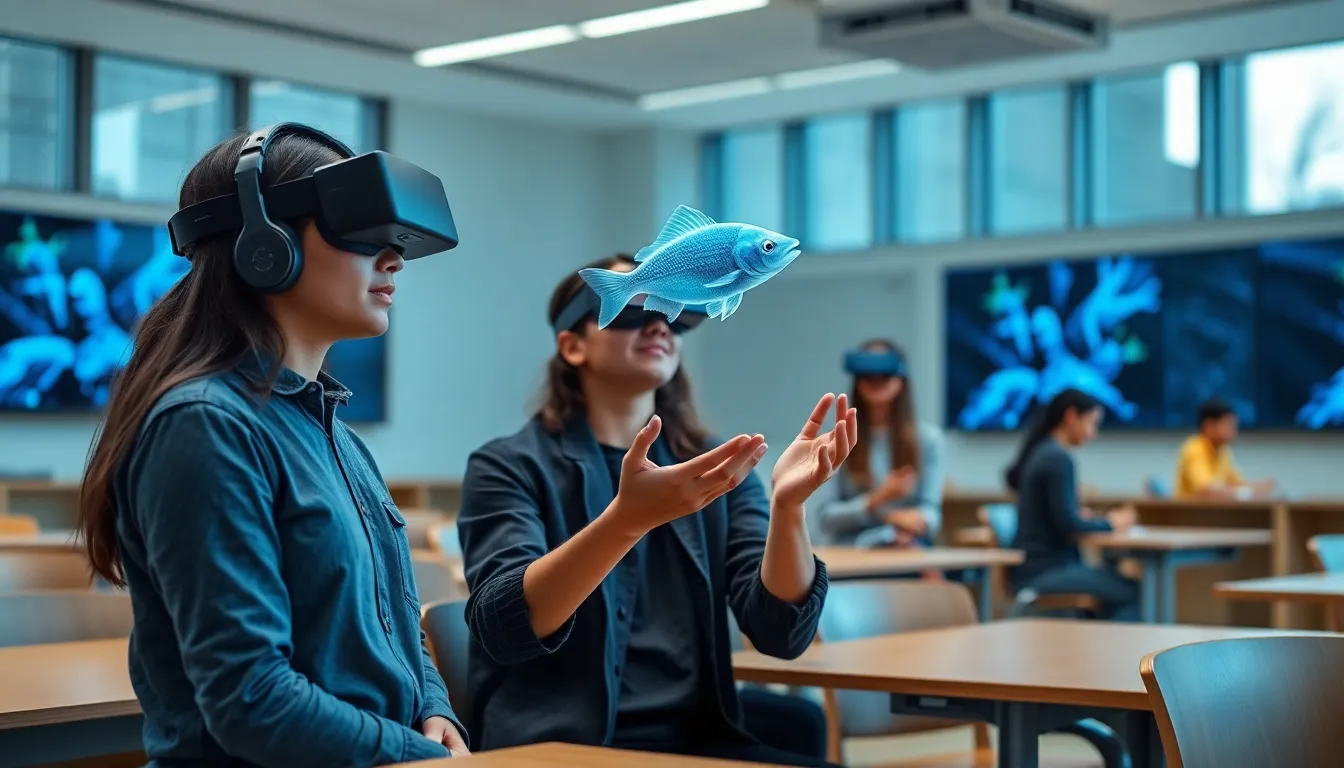In a world where the lines between reality and technology blur, two rivals stand at the forefront of innovation: mixed reality (MR) and augmented reality (AR). Imagine strapping on your sleek headset and being transported to another world, or simply peering through your smartphone to see vivid holograms hovering over your coffee table. It’s enough to make anyone’s head spin. But what sets these two apart? Are they just playful cousins in the tech family, or do they have distinct purposes? Buckle up, as we jump into a comparison that’s sure to enlighten and entertain.
Understanding Mixed Reality

Definition and Key Characteristics
Mixed reality is a cutting-edge blend of the real and digital worlds. Unlike augmented reality, which overlays digital elements on the real environment, mixed reality allows users to interact with both real and virtual objects. This interaction creates a seamless experience where the virtual elements are not just superimposed but genuinely integrated into the user’s surroundings. Imagine a virtual fish swimming in your living room, with real furniture augmenting its path.
Applications of Mixed Reality
In the realm of education, mixed reality serves as an immersive learning tool. Students can engage with complex concepts, like biology or physics, by manipulating 3D models as if they were right there in front of them. Also, industries like architecture use mixed reality to create interactive models of buildings before they are constructed. Medical training has also gained traction, where MR simulations allow doctors to practice complex surgeries in a risk-free environment.
Benefits and Challenges
Mixed reality offers remarkable benefits, including enhanced learning experiences and improved operational efficiency. Users can visualize and interact with models in real time, making decision-making faster and more informed. But, challenges remain. Technical limitations, such as high costs and the need for sophisticated hardware, can hinder widespread adoption. Also, there’s the issue of user comfort: some may find headsets cumbersome after prolonged use.
Exploring Augmented Reality
Definition and Key Characteristics
Augmented reality, on the other hand, enhances the real world with digital overlays. This technology utilizes devices, such as smartphones or AR glasses, to add information, like text, images, and sounds, to what users see in their physical environment. An example? Pokémon GO. When players spot a Pikachu in their backyard, it’s augmented reality bringing the game to life right before their eyes.
Applications of Augmented Reality
The applications of augmented reality are numerous and varied. In retail, AR apps empower customers to virtually try on clothes or visualize how a piece of furniture would look in their home. In healthcare, AR can assist surgeons by overlaying critical information onto their field of vision. Gaming, like our previous example, continues to push boundaries as AR technology evolves to create more engaging and interactive experiences for users.
Benefits and Challenges
The primary benefit of augmented reality lies in its user accessibility. Most people possess smartphones, making AR experiences more widespread and easy to engage in without the need for specialized hardware. Nevertheless, challenges persist, particularly about privacy and data security. Users’ actions are often tracked, raising concerns about how personal information is managed and utilized.
Comparative Analysis
Similarities and Differences
While mixed reality and augmented reality share common ground in blending the digital and physical worlds, key differences define their unique identities. Mixed reality entails a higher level of interaction and immersion, as users can manipulate and interact with digital objects within their real-world setting. In contrast, augmented reality focuses primarily on adding digital information to enhance the user’s perception without close interaction.
Technological Foundations
Augmented reality predominantly relies on smartphone cameras and sensors, which detect environments and overlay digital information. Mixed reality needs sophisticated systems, including depth sensors and specialized software to create interactive experiences that respond to user movements. This technological gap often leads to mixed reality being perceived as a more advanced and demanding medium.
Use Cases in Various Industries
In the corporate sector, mixed reality shows off its strengths, particularly in the fields of engineering and design. Companies like Microsoft have pioneered applications that allow teams to collaborate on 3D models in real time, regardless of their physical location. Meanwhile, augmented reality thrives in the entertainment industry, with apps enhancing user engagement through interactive experiences and marketing.
Future Trends and Developments
Emerging Technologies
Both mixed reality and augmented reality are on the precipice of rapid growth, spurred by emerging technologies like 5G and artificial intelligence. With faster connectivity, users can expect smoother experiences that allow for more complex interactions. AI advancements could also personalize user experiences, making these technologies more intuitive and responsive to individual user behaviors.
Potential Impact on Society and Industry
The implications of widespread adoption of mixed reality and augmented reality are vast. In education, they could democratize access to quality learning tools, bridging gaps and making resources accessible to those in remote areas. In industries, such as real estate and maintenance, these technologies could streamline processes, reducing costs and enhancing productivity. As adoption increases familiarity and comfort, the potential impact on society and industry stands to revolutionize how people engage with the world around them.
